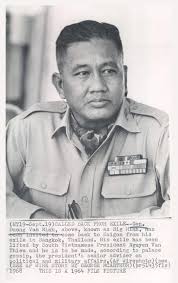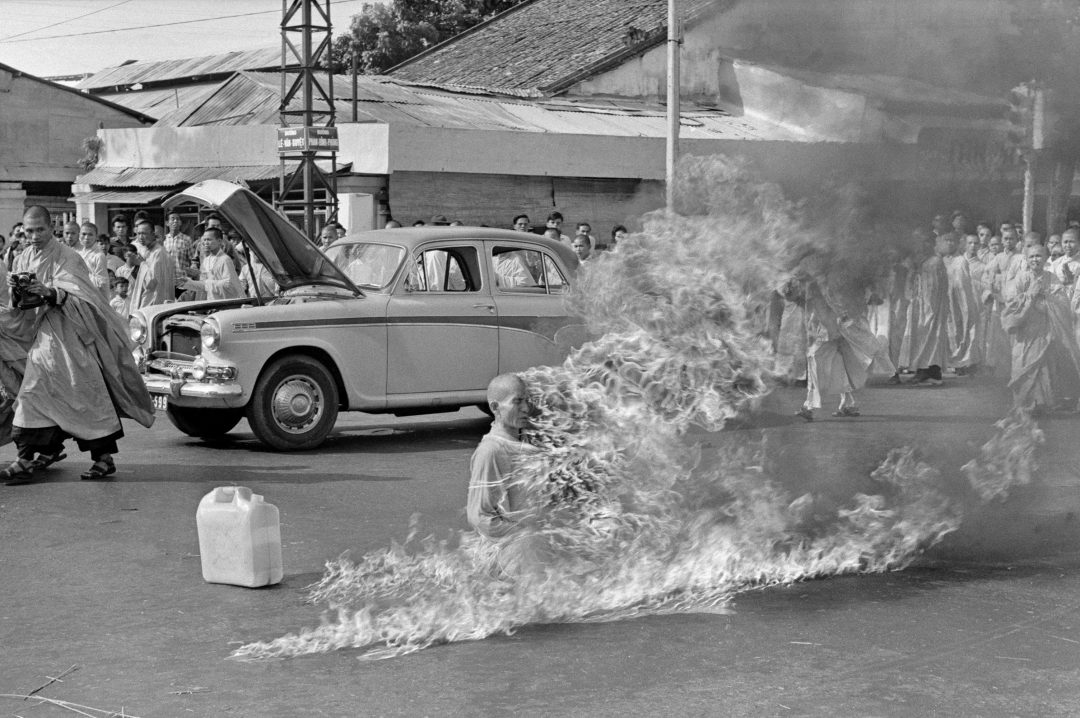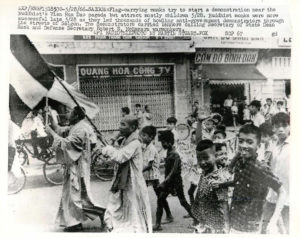From November 1963 to July 1965, the militant Buddhist movement was the most important foundation of political instability in South Vietnam. Although the Buddhist Militant movement was a representation of the Buddhist masses and fighting for religious freedom they were, in fact, a small and unrepresentative sect fighting for political dominance.
“Relying extensively on Byzantine intrigue and mob violence to manipulate the government, the militant Buddhists practiced a form of political activism that was inconsistent with traditional Vietnamese Buddhism. The evidence also suggests that some of the militant Buddhist leaders were agents of the Vietnamese Communists”.
Buddhists as non-Communists According to Vietnamese historians
Vietnamese historians have generally portrayed the Buddhists as non-Communists who were merely seeking freedom from religious intolerance and repression.
However, once we look at the available, evidence, we can clearly see that the militant Buddhists were deliberately trying to undermine every government that assumed power from 1963 forwards for caused that had nothing to do with religious freedom. “In addition, at least a few of the Buddhist leaders willingly collaborated with the Communists. To some extent, therefore, the Buddhist movement was engaged in covert action, and in a highly effective fashion at that”.
Until 1963, the Vietnamese Buddhist monks had rarely taken a part in the politics of the nation; they preferred to deal with matters of religion instead of the state. They were divided into various sects, none of which were very well organized and each region of Vietnam had a distinctive sect of Buddhists.
The conflict between the Buddhists and the Saigon government
“The conflict between the Buddhists and the Saigon government began on 8 May 1963, when nine civilians were killed at a Buddhist protest under mysterious circumstances. Led by the monk Tri Quang, a group of Buddhists organized demonstrations and told the foreign press that the Diem government was oppressing Buddhists. This group became known as the militant Buddhists. Diem refused to make concessions and undertake the reforms the militant Buddhists and the Americans were demanding. As a result, the United States turned against Diem. In October 1963, the U.S. embassy gave its blessing to a plot conceived by several senior generals, and on 1 November the generals ousted Diem and put him to death”.
 General Duong Van Minh led a committee of generals and took control and freed all the Buddhists whom Diem had jailed. However, the Buddhist issue did not go away and within the first month, three Buddhists committed suicide in protest.
General Duong Van Minh led a committee of generals and took control and freed all the Buddhists whom Diem had jailed. However, the Buddhist issue did not go away and within the first month, three Buddhists committed suicide in protest.
General Minh was an incompetent ruler and spent a lot of the time arguing with the rest of generals, letting the Viet Cong have a chance to develop their military position. On 30th January, Khanh incarcerated Minh and his closest associates and made himself prime minister.
The Buddhist militants criticized Khanh and Tri Quang accused him of denying religious freedom to Buddhists and giving government officials open authorization to imprison Buddhists. “As had occurred during Diem’s conflict with the Buddhists, Tri Quang only demanded more when Khanh made concessions. Unlike Diem, Khanh continued to satisfy the never-ending stream of demands. Part of the explanation for Khanh’s behavior lay in his belief that resisting the Buddhists would alienate the Americans, as had happened to Diem. The other part was Khanh’s political naivety and timidity. To satisfy Tri Quang, Khanh had the Army remove all Catholic chaplains”.
The Buddhist Crisis of 1966 would demonstrate that the militant Buddhists could be dealt with without destroying the war effort. The containment of the Buddhists during 1966 freed the government from “harmful Buddhist pressures and made possible a greater degree of national cohesion in South Vietnam from then onwards”.
Bibliography:
Moyar, Mark (2004) Political Monks: The Militant Buddhist Movement during the Vietnam War, Modern Asian Studies, Cambridge University Press.






